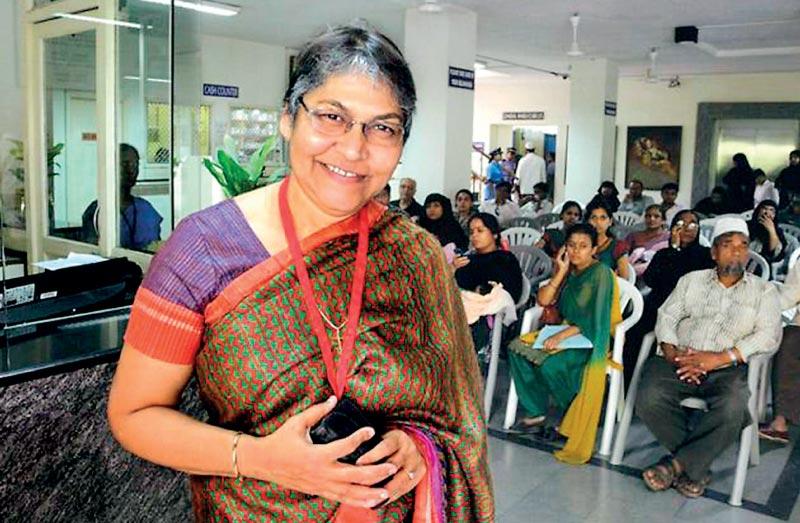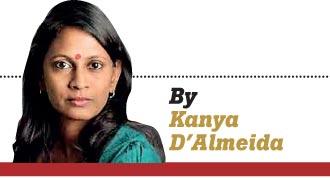Reply To:
Name - Reply Comment

 Gentle, undisturbed birth. Delayed cord clamping. Respecting mothers’ choices. Vaginal Births After C-Sections (VBACs.) Water births. Physiological breech births. Reducing episiotomies and unnecessary interventions. Bodily autonomy and informed consent.
Gentle, undisturbed birth. Delayed cord clamping. Respecting mothers’ choices. Vaginal Births After C-Sections (VBACs.) Water births. Physiological breech births. Reducing episiotomies and unnecessary interventions. Bodily autonomy and informed consent.
These were just some of the many topics explored at the Better Birthing Experience conference held in Hyderabad, India, from November 4-6th 2023.
Organized by the Fernandez Hospital, Education and Research Foundation, in partnership with the United Nations Population Fund (UNFPA) this was the first conference of its kind to bring together obstetricians, midwives, doulas, lactation consultants, physiotherapists, childbirth educators and policymakers from across India with the stated aim of advancing and sharing best practices in natural childbirth and midwifery-led care.
Fernandez Foundation defines midwifery-led maternity care as “a collaborative approach to care that is a deliberate departure from the doctor-led model of care that often leads to unnecessary, unethical medical interventions for low-risk women.”
It is a paradigm that shifts the focus away from the obstetrician and onto the birthing woman—allowing her respect, time, power and control in the birthing room.
On the heels of the conference, Kanya D’Almeida spoke to Dr Evita Fernandez, an obstetrician who is widely recognized across India as a pioneer in rolling out the midwifery-led care model, first through her institution, the Fernandez Hospital, and later through her training of midwives across the government health sector of Telangana, a state of 35 million people in southern India.
Founded by Dr. Fernandez’s parents in 1948 as a 2-bed maternity facility, the Fernandez Hospital evolved into a general hospital, and finally into a full-fledged maternity hospital in 1996. Fernandez has supported over 200,000 births in the course of its 7-decades-long history and operates according to a simple philosophy: humanizing childbirth.
There are valuable lessons here for Sri Lanka. While we have excellent maternal mortality statistics—the lowest in the region, with 30 deaths for every 100,000 live births—the stories and lived experiences of birthing women tell a very different story. In both the public and private sectors, women report being mistreated, harmed, and subjected to a host of unnecessary medical interventions, often without their consent.
A 2018 study, ‘When Helpers Hurt’, published in the BMC medical journal, documented multiple cases of verbal, emotional, physical, and even sexual assault by doctors and nurses on laboring women across Sri Lanka’s public hospital wards.
We cannot ignore these stories, which point to a terrible malaise in our healthcare system—a pattern of depriving women of respect and bodily autonomy during childbirth. Hiding behind statistics will only worsen the problem over the long term. Not everything can be reduced to the simple mathematics of life over death. Somewhere in that equation, we have to make space for a third dimension, which is birth. Empowered, dignified, gentle birth.
 Q: As an obstetrician, how did you make such a radical departure into the midwifery-led model of care?
Q: As an obstetrician, how did you make such a radical departure into the midwifery-led model of care?
We became a referral center in the twin cities (of Hyderabad and Secunderabad) way back in 2000 because we were offering 24/7 services of anesthesia, neonatologists, and an in-house consultant-level OB-GYN. Sometimes, complicated cases were referred: very young mothers, with multiple organ failure, arrived from distances of 60-100kms. And sometimes, we couldn’t save them. I would stand there helplessly watching this 22-year-old mother dying in front of me. And so started my interest in maternal deaths.
The more I read, the more I realized that countries which had reduced their maternal deaths did it because of government investment in a very strong midwifery workforce that formed the backbone of their maternity services—such as the United Kingdom, Sweden, the Netherlands, some states of America, and your own Sri Lanka.
So, I went to the Telangana state government, but was told they would not invest in any training of their nurses that went beyond 3 months. That argument did not hold up for me, because you’re talking about a healthcare professional who is responsible for 2 lives—so her competence has to match global standards. How can you do that with 3 months training?
Q: Interestingly, in Sri Lanka, though we have a strong cadre of what we call Public Health Midwives (PHMs), they don’t deliver babies. In our public hospitals, where 94 percent of births take place, every baby is delivered by a consultant OB-GYN. The midwives primarily provide pre- and postnatal care. Is that the kind of midwifery care you are referring to?
No, I am talking about the kind of training that is based on the standards of the International Confederation of Midwives (ICM). By 2010, I was fed up with the government’s lack of support. At the same time, Fernandez was doing roughly 5,000 deliveries in a year. I decided to start our own in-house training. You see, in India, after three years of basic training, qualified nurses get a diploma that says, “nurse and midwife.” They are certified as midwives but don’t have the skills of midwives! So, Fernandez chose 7 nurses who were brave enough to enter our 2-year pilot training program based on the clinical competencies laid out by the ICM. This curriculum met global standards and included emergency obstetric skills.
I had support from a public health consultant in the UK, who helped put the curriculum together. Midwives from the UK volunteered to come and teach. And as we rolled out the program, I began to realize the stark difference between the midwifery philosophy and our obstetric team’s highly medicalized approach. I had invited the prominent Indian childbirth educator, Nutan Pandit, to run an antenatal preparation course, and as I sat in one of her classes, I discovered to my horror that what we should be doing for a mother in the birthing room was different from what we were doing in practice. We were running on parallel lines. And that’s when we did a 180-degree turn and changed our childbirth practices in our birthing rooms.
Q: And how did you roll out this learning/teaching beyond the Fernandez institution?
In 2007 the government of India made it mandatory for women to come to an institute at birth. So, home births more or less ended, except in places deep inside the tribal belts. Women were given financial incentives to birth in hospitals, so in Telangana for instance our volumes in public hospitals increased by about 40%—and with that came a rise in morbidity, because all of a sudden you had an influx of women but not enough staff, not enough beds, not enough infrastructure. There were no midwives, and all these young doctors who had only just graduated into the government force and didn’t have the skills to deal with the volume. The need to train a competent workforce became very clear. So, in 2017, when the government of Telangana asked us to conduct a pilot training of 30 nurses in public hospitals, we were able to begin a process where the transformation of nurses into midwives could cascade down. We are now a national midwifery training institute, training in 10 states across India.
We began that initial training saying everything we do rests on respect, compassion, and kindness. On the third or fourth day, in a session on respectful care, we enacted scenes from the birthing room and it was like opening the floodgates. Nurses in this pilot group shared their own birth stories: That’s how I was treated. I was slapped and pinched during labour and so on. What was meant to be an hour’s session went on for a day, with all of us crying and supporting one another. Bonding happened, and healing happened—because until that moment, they had not shared those stories.
Q: Did you face opposition from the obstetric fraternity?
We continue to face pushback from the obstetric fraternity! In India, the private sector doesn’t have midwives—we are the only private hospital in the whole country where you have obstetricians and midwives working together. That tells you a lot considering 60 percent of the 27 million births that happen in India annually happen in the private sector.
I think the reason for the opposition is a combination of ignorance and fear among obstetricians. Ignorance of what exactly a midwife does, and fear that your bread and butter will be taken away.
Because if your paycheck is linked to every birth you attend, then you might not want a midwife doing what you’re doing. At Fernandez, we are all on salaries—our income is not linked to the births we perform or assist, so midwives are not a threat to anyone. Even so, it took me about 18 months to get my obstetric team on board—everyone had their own fears, but we worked through those fears. Now there is a culture of tremendous support and collaboration.
 Q: What was your greatest takeaway from the Better Birthing Experience conference?
Q: What was your greatest takeaway from the Better Birthing Experience conference?
The fact that everybody felt included and respected. The doulas, the lactation counsellors, the policymakers, the mothers, the physiotherapists, and even the obstetricians. Each of these people is so important to a woman’s overall birthing experience. We can never do this alone. Especially because the long-term impacts of respectful care—and what happens during labour—go far beyond the birthing room. It impacts mother-infant bonding. It impacts the cognitive development of the child. Lifelong impacts. And this is what obstetricians need to realize. We’ve become like technicians, we just want to catch the baby, but there is so much more to it. Until we understand that, we’re just going to continue doing what we’re doing, without any awareness of the harm we’re causing.
Kanya D’Almeida is a fiction writer and hosts The Darkest Light podcast, which explores stories of birth and motherhood in Sri Lanka. From 2010-2020 she reported on reproductive rights and sexual health from the United Nations, Washington DC and New York City. Kanya is also a MFA Writing Candidate, 2018 of Columbia University School of the Arts.